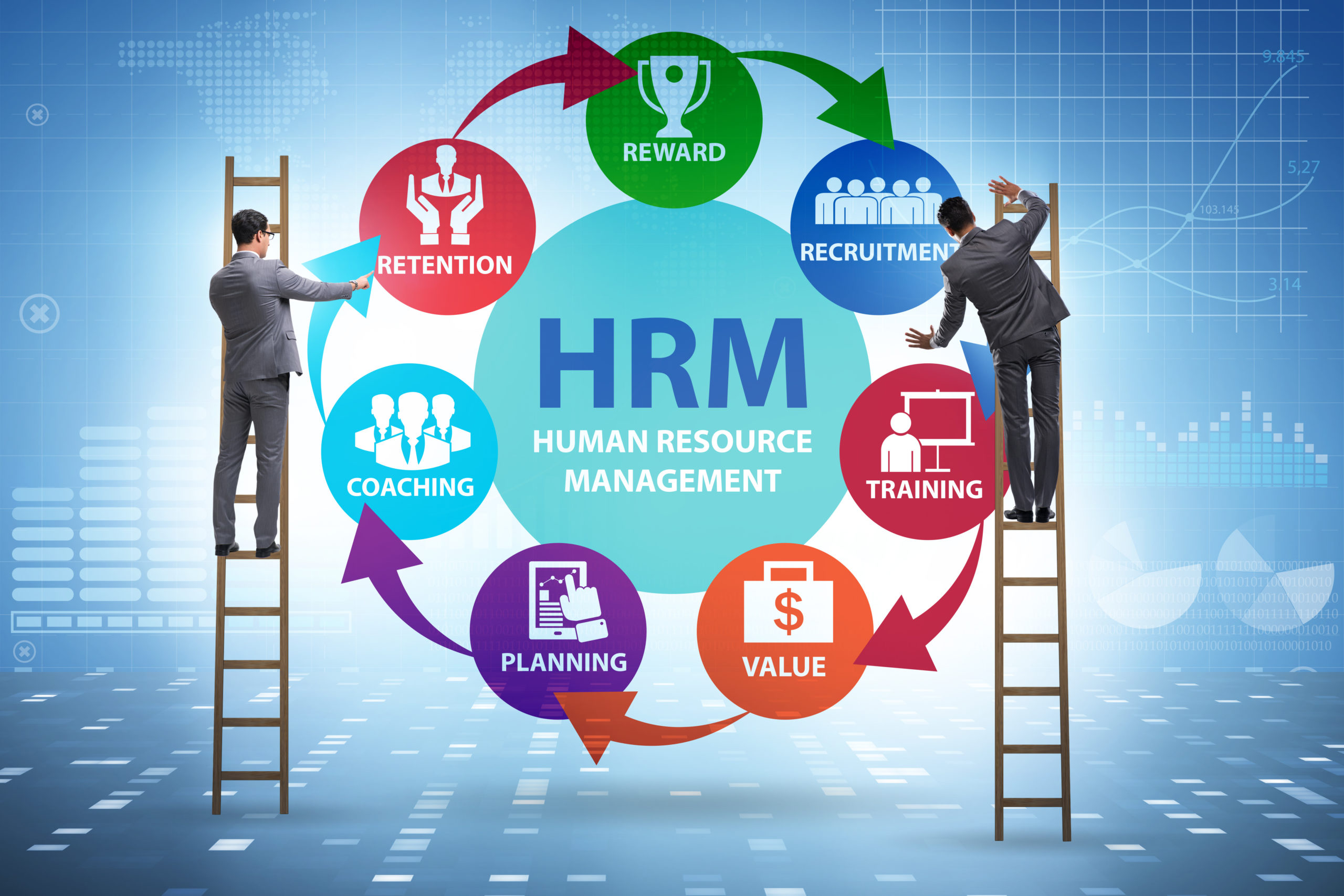“Human resources are like natural resources; they’re often buried deep. You have to go looking for them; they’re not just lying around on the surface.” – Ken Robinson.
As the search for talent intensifies in today’s hyper-competitive job market, HR professionals and managers must understand how to leverage Human Resource Management (HRM) strategically to create an organizational culture attractive to sought-after candidates. To create a thriving organization where employees feel valued, accepted, and engaged, Business leaders must utilize all aspects of HRM, including recruiting and selection, learning and development activities, compensation planning, workforce analytics, and more. This blog discusses how to strategically utilize HRM to create an organizational culture conducive to attracting, training, and retaining top talent. Let’s get started!
Employer Reviews
Employer reviews are descriptions of employees’ experiences working at a given company. They are usually written by current, and past employees and are made available for most companies on recruitment websites, employer evaluation blogs, social media, and traditional media.
- 86% of employees and job seekers research company reviews and ratings to decide where to apply for a job. (Glassdoor, 2021)
- 86% of HR professionals surveyed indicated recruitment is becoming more like marketing. (Glassdoor, 2021)
These reviews provide valuable insight into the work culture of a company, health and safety records, compensation offerings, and growth opportunities. In addition, employer reviews reflect the opinions about a company from a person who works there or has worked there previously. Hence, online reviews are an excellent way for organizations to gauge their work culture, environment, and attractiveness to job seekers.
What is a Human Resources (HR) Strategy?
HR strategy focuses planning and the allocation of company resources to solve an organization’s staff management challenges.
What are the main functions of Human Resources Management (HRM)?
The main functions of HRM are recruitment, workplace safety, employee relations, compensation planning, labor law compliance, and training. When these functions are managed thoughtfully, ethically, and with employee input, they help to create a company culture that attracts the best and brightest.
How to use HRM functions to create an attractive organizational culture
Workplace Safety
The primary purpose of workplace safety is to provide a framework designed to protect employees from health and safety hazards on the job. Therefore, addressing health and safety should be viewed as an opportunity to show employees that their health and well-being are vital and a company priority.
- 76% indicated that companies should be doing more to protect workers’ mental health
- 85% said that newfound work-related stress is affecting their home lives. (MIT Sloan)
The benefits of sound health and safety policy and procedures can include:
- Reduced costs, accidents, and unnecessary risks
- lower employee absence and turnover rates
- Reduced threat of legal action
- Improved standing among suppliers and partners
- enhanced reputation for corporate responsibility among investors, customers, and communities
- Facilitates healthier, happier, and better-motivated employees
Safety in the workplace significantly impacts all aspects of employee performance and productivity. In brief, safe working environments benefit from fewer accidents, which results in fewer occupational health costs, better employee retention and satisfaction, and less employee downtime.
Compensation Planning
Compensation includes direct and indirect rewards and benefits paid to employees for their contribution to the business. So, the more aligned the compensation system is with the organization’s goals, the fairer employees will perceive it.
Consider the following points when developing compensation in your strategy:
-
- Determine staffing priorities
- Seek employee input
- Assess the company’s goals and compensation for alignment
- Research compensation data and evaluate the talent market
- Check compensation strategy for legal compliance
Having a competitive compensation and benefits program enhances job satisfaction. When employees are happy with their pay and benefits package, it increases their loyalty, motivation, and satisfaction and provides them with a greater sense of fulfillment and purpose.
Employer-Employee Relations
“When you have trust, and you get that trust in place throughout the company, people are empowered – people are free.” – Angela Ahrendts.
Positive employer-employee relations are the connections management has with employees. When employees have a strong and healthy relationship with their employers, the entire company benefits. Studies show that employees who have mutually respectful relationships with their employers are more likely to be satisfied, committed, and productive.
- 82% of employed Americans do not feel their supervisors recognize them sufficiently for their contributions. (Harvard Business Review)
- 75% of Senior HR Managers agree that collaboration, constant communication, and a mentorship culture between managers and teams will become the future mandate of a high-performing workplace. (Cision)
Enhanced labor relations result in improved work productivity and profits. In addition, good labor relations are linked to higher customer retention levels. When the employees feel satisfied with their work, they pay closer attention to clients’ needs, resulting in more positive customer experiences.
Labor Law Compliance
Employment Law works to protect employees’ and employers’ rights, safety, and health. Employment Law was also developed to provide businesses and organizations with the ability to have consistency, clarity, fairness, and transparency.
Legal compliance leads to the following benefits:
- Protects the business from financial and reputational harm
- Promotes an organizational culture based on “doing the right thing”
- Increases operational efficiency and decision-making
- Facilitates improved communications between employees and management
- Encourages employees to report potential wrongdoing without fear of retribution
- Reduces discrimination, bullying, and toxicity in the workplace
- Encourages a business culture based on ethics
Companies generate a reliable and productive working environment if labor laws and regulations are respected. Labor law ensures that employees can work in a fair and safe working environment.
Employee Training and Development
Training programs prepare employees for taking on responsibilities and assisting in their career development. For example, offering education on role-specific skills, such as leadership training and management styles, or conducting effective performance evaluations, prepares individuals for career advancement within the company.
- 69% of employees are likely to stay with a company for 3 years or if they experience great onboarding. (Clickboarding)
- Retention rates rise 30-50% for companies with strong learning cultures. (Lorman)
- 74% of workers are willing to learn new skills or re-train to remain employable.
- 76% of employees say that a company would be more appealing if it offered additional skills training to its staff.
Employee training is critical for anyone to develop and improve their expertise and abilities. When employers give staff training opportunities, this results in a culture of continuous learning and growth. A work environment that encourages learning allows employees to expand their knowledge and skills, increasing their performance and improving company-wide employee morale.
Employee Engagement
“To build a rewarding employee experience, you need to understand what matters most to your people.” – Julie Bevacqua.
Employee engagement is the degree to which employees invest their mental, emotional, and behavioral energies toward positive organizational outcomes. Also, high employee engagement leads to higher productivity, job satisfaction, improved sales, and more profits. Moreover, employees feel happier and ready to go above and beyond to achieve the company’s goals when actively engaged in the workplace.
- A study on employee engagement found that companies in the U.S. lose between $450-$550 billion each year due to disengaged workers.
- 70%of employees said that their work defines their sense of purpose. (McKinsey & Company)
Engaged workers are often the best performers and go above and beyond their job description. This behavior leads to an increase in employee productivity and business success. For instance, Gallup found that companies with higher employee engagement saw a 21% increase in productivity compared to those with lower engagement.
“The value of a business is a function of how well the financial capital and intellectual capital are managed by human capital. You’d better get the human capital part right.” – Dave Bookbinder.
As the competition for talented employees intensifies, it is more important than ever for organizations to strategically implement HRM practices that will create an attractive and engaging organizational culture. By taking a holistic approach to HRM, incorporating all aspects of the process from recruiting and selection to learning and development, compensation planning, and workforce analytics, businesses can avoid missing out on top talent and create a thriving workplace where employees feel valued and engaged.
Thank you for reading our article!
TimeWellScheduled.com is a secure online time and attendance software that is 100% tailored to meet your scheduling needs! In addition, TimeWellScheduled facilitates employee attendance tracking & payroll tasks and enhances staff management capabilities. Plus, our service is free for up to 10 employees!
Click: here to download our (Excel) employee scheduling template; IT’S FREE!





